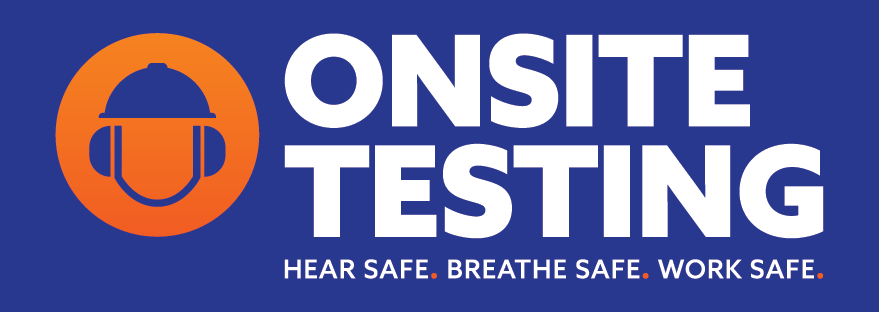Did you know that from 29/07/2025, audiometric testing became mandatory in Queensland under Work Health and Safety Regulation 2011 for workers who are required to wear hearing protection due to noise exceeding the exposure standard?
Although not always the case, as a general guide, if workers require hearing protection, they most likely require audiometric testing. We provide a quick (10-12 minute) non-invasive test that measures a person’s ability to hear different sound frequencies and volumes, with reporting provided in accordance with AS/NZS 1269.4:2014.
Our mobile testing unit can come to the workplace (if preferred), minimising disruption and allowing staff to get back to work quickly. Alternatively, an appointment can be made at our Head Office located in Ipswich (Qld).
Why it's needed
- From 29 July 2025 WorkSafe Queensland made changes to the Work Health and Safety Regulation 2011 which introduced new audiometric testing requirements for workers.
- Excessive noise exposure is a common hazard in workplaces and exposure to high noise levels can impair hearing, quality of life and reduce situational awareness, increasing the risk of accidents.
- From 29 July 2025, PCBUs (Employers) must provide audiometric testing for workers who need hearing protection due to noise levels exceeding the exposure standard:
- LAeq,8h of 85 dB(A)1 (a worker’s average noise exposure over a standard 8-hour workday), or
- LC,peak of 140 dB(C)2 (the loudest instantaneous noise peak a person is exposed to)
- Although not always the case, as a general guide, if workers require hearing protection, they most likely require audiometric testing.
- Failing to comply with audiometric testing requirements could result in penalties for the PCBU (Employers) and may lead to workers’ compensation claims for hearing damage that could have been caused by previous employment.
- Not sure of noise exposure? Onsite Testing can conduct noise testing at your worksite in accordance with Work Health and Safety Regulation 2011.
When it is needed
- For new workers (that started on or after 29 July 2025), audiometric testing must be conducted:
- within 3 months of commencement of employment (reference/baseline test)
- at least every 2 years thereafter (monitoring test)
- For existing workers (that started prior to 29 July 2025), audiometric testing must be conducted:
- first test before 29 July 2027 (note that PCBUs are encouraged to prioritise a reference/baseline test to protect against the risk of hearing loss)
- at least every 2 years thereafter
What it is
- Audiometric testing takes approximately 10-12 minutes (per worker) and is a painless, non invasive test that measures a person’s hearing ability including but not limited to:
- Assessing hearing sensitivity
- Detecting hearing loss
- Monitoring hearing changes over time
- Audiometric testing must be conducted in accordance with AS/NZS 1269.4:2014 to meet the requirement in section 58 of the Work Health and Safety Regulation 2011.
How it's done
- Our mobile capability allows us to conduct audiometric tests at your worksite, minimizing disruption to your operations. Simply block a period of time (we will provide a quote based on the number of workers) and we will then provide you with a schedule to give to your workers on the day. If preferred, appointments can also be made at our Head Office in Ipswich (Qld).
- Audiometric testing begins with a quick questionnaire and discussion about the workers’ history.
- Wearing headphones, the worker will then be asked to respond to sounds of different frequencies and decibels. The results are then discussed and a compliant report is provided.
What’s included
- A review of medical and noise exposure history
- Questions about your medical history that may affect hearing
- Details of previous noise exposure
- Preparation and instruction for testing
- Workers are required to attend 5 minutes in advance of testing to avoid errors
- Removal of spectacles, hats, earrings, hearing aids or anything which may interfere with the proper placement of the earphones
- Fitting of the earphones
- Explanation of the test procedure
- Audiometry test
- Test results explained and recommendations given
- Results of the audiometric testing are provided to the worker and employer (with the workers consent)

Request a Quote
Frequently Asked Questions
What is audiometric testing?
Audiometric testing is a quick, painless, non-invasive test that measures a person’s hearing ability including but not limited to:
- Assessing hearing sensitivity
- Detecting hearing loss
- Monitoring hearing changes over time
Do I need to consult with workers about audiometric testing?
Yes, PCBUs (Employers) are required to consult with their workers about matters relating to their health and safety.
How can I get my workers tested?
Contact us at Onsite Testing to arrange compliant testing for your workers to meet your regulatory obligations:
P: 07 3282 7082
E: bookings@onsitetesting.com.au
Who is required to pay for audiometric testing?
Employers (PCBUs) are responsible for organising and paying for audiometric tests for their workers.
Who requires audiometric testing?
PCBUs (Employers) must provide audiometric testing for workers who need hearing protection due to noise levels exceeding the exposure standard:
- LAeq,8h of 85 dB(A)1, or (a worker’s average noise exposure over a standard 8-hour workday)
- LC,peak of 140 dB(C)2(the loudest instantaneous noise peak a person is exposed to)
Although not always the case, as a general guide, if workers require hearing protecting, they most likely require audiometric testing. The Code of Practice (Managing noise and preventing hearing loss at work) provides examples of the length of time a person can be exposed, during an eight hour shift, before the standard (LAeq,8h of 85 dB(A)) is exceeded, together with some common noise sources and their typical sound levels:
| Noise level dB(A) | Exposure time before standard is exceeded | Common noise sources |
| 87dB | 4 hours | Power drill |
| 90dB | 2 hours | Lawnmower |
| 94dB | 1 hour | Circular saw |
| 98dB | 15 minutes | Hammering nails |
| 100dB | 15 minutes | Sheet-metal workshop |
| 130dB | 0.9 seconds | Rivet hammer |
If you are unsure or would like to enquire about our noise testing services, contact Onsite Testing for more information:
- P: 07 3812 2920
- E: enquiry@onsitetesting.com.au
Do employers have to do a noise assessment?
Section 57(1) of the Work Health and Safety Regulation 2011 states the PCBU must manage risks to health and safety relating to hearing loss associated with noise, and Section 34 states that a PCBU must identify reasonably foreseeable hazards that could give rise to risks to health and safety. The Managing noise and preventing hearing loss at work Code of Practice 2021 provides guidance. Onsite Testing can assist with noise assessments. For more information contact us:
- P: 07 3282 7082
- E: enquiry@onsitetesting.com.au
Do all workers require audiometric testing at a worksite?
No, only workers who are required by the PCBU (Employer) to wear hearing protection as a control measure where noise exceeds the exposure standard are required to have mandatory audiometric testing.
How often is audiometric testing required?
- From July 29, 2025 audiometric testing for new workers must be conducted:
- within 3 months of a worker starting the relevant work
- at least every 2 years thereafter
- From July 29, 2025 audiometric testing for existing workers must be conducted:
- first test completed before 29 July 2027
- at least every 2 years thereafter
What happens if the tests prove hearing loss?
Results of the audiometric testing are provided to the worker and employer (with the workers consent). If further investigation is required, Onsite Testing will recommend the worker attend an audiologist.
I’m not sure if my workers should be wearing hearing protection, what should I do?
The PCBU (Employer) must conduct a workplace noise assessment to ensure that the noise that the workers are exposed to at the workplace does not exceed the exposure standard for noise which is:
- LAeq,8h of 85 dB(A)1 (a worker’s average noise exposure over a standard 8-hour workday), or
- LC,peak of 140 dB(C)2 (the loudest instantaneous noise peak a person is exposed to)
Onsite Testing can assist with noise assessment. For more information contact us:
- P: 07 3282 7082
- E: enquire@onsitetesting.com.au
When did it become a requirement for workers in Queensland to undertake audiometric testing?
From 29 July 2025 WorkSafe Queensland made changes to the Work Health and Safety Regulation 2011 which introduced new audiometric testing requirements for workers.
My worker was tested before I employed them. Is this test still able to be used?
Yes if:
- The test is done within three months before the worker has commenced the work
- The test is done in accordance with the procedures in AS/NZS 1269.4:2014 Occupational noise management – Auditory
assessment
Who can conduct audiometric testing?
An audiometric test must be performed by a competent person, with the necessary level of training and experience to perform the test, interpret the results and present them in a manner that enables persons at the workplace to make appropriate decisions. Our testers here at Onsite Testing are trained and experienced in the aspects of Audiometric testing and meet the requirements of a competent person.
Who gets the audiometric test results?
The results of the audiometric testing are provided to the worker and employer (with the workers consent). Test results and recommendations are explained to the worker.
Are audiometric test results required to be kept?
Yes, The PCBU (Employer) must ensure audiometric test results are kept as confidential documents and retain these results in accordance with requirements for employee records under legislation such as the Fair Work Act 2009 (Cth) and Privacy Act 1988 (Cth). When inspecting a workplace for noise and audiometric testing compliance, WHSQ inspectors may seek records of noise assessments and audiometric test results.
Onsite Testing keep the results safely and securely as confidential documents. These records are kept as a baseline for future audiometric tests.
Are labour hire organisations and Group Training Organisations (GTO) required to arrange for audiometric tests for their workers?
Labour hire organisations and host employers share duties of care for labour hire workers. Labour hire agencies and host employers must consult and exchange information and work together to manage the noise risks to labour hire workers. Labour hire organisations must ensure workers are only sent to host employers where risks from noise-induced hearing loss, are appropriately identified, assessed, controlled and monitored. Workplace Health and Safety Queensland considers labour hire organisations responsible for ensuring compliance with audiometric testing requirements.
Similar to labour hire arrangements, both the GTO and the host employer share duties of care for apprentices. Workplace Health and Safety Queensland considers GTOs responsible for ensuring compliance with audiometric testing requirements.
